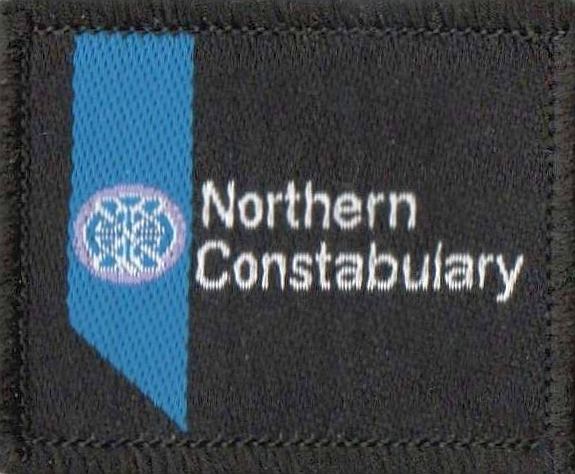Formed 16 May, 1975 (merger) Size 31,186 km² Address Wick KW1 5LB, UK Founded 1975 | Dissolved 2013 (amalgamation) Population approx. 300,000 Phone +44 1955 603551 Stations 71 | |
 | ||
Legal personality Governmental: Government agency Operations jurisdiction* Police area of Highland, Western Isles, Orkney Isles and Shetland Isles, UK Motto Dion is Cuidich (Scottish Gaelic) | ||
Northern constabulary community at forres 2016
The Northern Constabulary (Scottish Gaelic: Poileas a' Chinn a Tuath) was the territorial police force responsible for Northern Scotland, covering the Highland council area along with the Western Isles, the Orkney Isles and the Shetland Isles, which make up most of the Highlands and Islands area. It was the police force covering the largest geographical area in the United Kingdom, equivalent to the size of Belgium, but was one of the smallest in terms of officers, with about 715 officers. The Constabulary was one of those which was amalgamated to form Police Scotland in 2013.
Contents
- Northern constabulary community at forres 2016
- Northern constabulary media briefing
- History
- Divisions and Area Commands
- Uniform
- References
Northern constabulary media briefing
History
This police force was formed on 16 May 1975 as a merger of the pre-existing Northern Constabulary, the Ross and Sutherland Constabulary (itself a merger of Ross and Cromarty Constabulary and Sutherland Constabulary) and the Inverness Constabulary (a merger of Inverness Burgh Police and Inverness-shire Constabulary), along with the northernmost portion of the Argyll County Police area, and the Nairn part of the Scottish North East Counties Constabulary. The previous Northern Constabulary had been created in 1969 by the merger of the Caithness Constabulary, Orkney Constabulary and Zetland Constabulary.
The new Northern Constabulary was created at the same time as local government reorganisation created the Highland regional council and the islands councils of the Western Isles, the Orkney Isles and the Shetland Isles. The rest of the Argyll County Police was merged into the Strathclyde Police, and the rest of the Scottish North East Counties Constabulary into the Grampian Police.
The Northern Constabulary area was the same as that covered by the Highlands and Islands Fire and Rescue Service.
In order to help keep decision-making as local as possible, Northern was at the forefront nationally in Devolved Resource Management (DRM) for many years. The Chief Constable allocated one-line budgets to each of his Area Commanders, closely monitoring progress across a range of indicators, over the year, through regular Performance Review and Performance Review Boards.
An Act of the Scottish Parliament, the Police and Fire Reform (Scotland) Act 2012, created a single Police Service of Scotland - known as Police Scotland - with effect from 1 April 2013. This merged the eight regional police forces in Scotland (including Northern Constabulary), together with the Scottish Crime and Drug Enforcement Agency, into a single service covering the whole of Scotland. Police Scotland has its headquarters at the Scottish Police College at Tulliallan in Fife.
Divisions and Area Commands
Northern Constabulary was split into three Divisions which were North, Central and East. In these three Divisions there were eight Area Commands, each with their own Area Commander. The Area Commands were:
Uniform
Until the early 21st century, the uniform consisted of a white shirt, black tie and a stab-proof vest. Northern Constabulary was the last police force in Scotland using shirts and ties. In 2009, the uniform changed to become similar to that of other police forces of Scotland: black shirt with force logo, stab-proof vest and black trousers.
